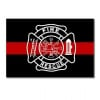The age old question that seems can't be proven. Does wood, finish, or size effect electric tone?
mattsl1983
Posts: 711
The age old question that seems can't be proven. Does wood, finish, or size effect electric tone?
The age old question that seems can't be proven. Does wood, finish, or size effect electric tone? 5 votes
Post edited by mattsl1983 on
0
Comments
-
The "I h" was supposed to be "I have no idea". Hit the wrong button...0
-
What if you think all play a role?Grand Rapids '04, Detroit '06
JEFF HARDY AND JEFF AMENT USED TO LOOK THE SAME
"Pearl Jam always eases my mind and fires me up at the same time.”-Jeff Hardy0 -
Fretboard material plays the biggest part in my experience. I think finish is really important as well.
I've read that guitar shape is more important than type of wood, but I don't have the gear to test it myself. Too many variables to test since every piece of wood is different.
I don't think it can be argued that all aspects play a part, but some are definitely more important than others, and few players have the gear to experiment to get any sort of consensus. Beyond that, "consensus" isn't a word used often in the guitar world.0 -
There are so many variables that can affect electric guitar tone, but beyond a few basics, the differences can be negligible. The most important elements of electric tone (amp and effects held separately, of course) are the player and the pickups. Next comes the wood, both the type and the resonance; ash will sound different than mahogany or maple, and some pieces of ash will sound different than other pieces of ash, etc. I believe that shape plays some function, but the bigger variable in shape is mass; heavier guitars sound different than lighter guitars. Neck joint is pretty important; bolt-on, glue-in, or neck-thru guitars all have certain tone signatures. I think fretboard material affects the player more than overall tone, but a glossy maple fretboard is much brighter than an oiled rosewood or ebony board. Things like nut and bridge material, or fret size and material, can play a part, especially with regards to the attack of notes, although it's less an element for electric guitars as on acoustics. String material, gauge, and coatings can play a part in overall tone as well; thicker strings versus thin strings, nickel versus steel and other alloys, and plastic- or polymer-coated strings versus natural. Once you get down to comparing different pots and caps in the tone stack, you've gone completely overboard. As I've said a million times before, though, the player is tone element #1. Give Jimi Hendrix a $70 First Act guitar to play, and he will sound like Hendrix. Most guitar players choose different guitars from era to era (or song to song) because they will work with and accentuate the elements their playing brings to a part.Post edited by mccreadyisgod on...and if you don't like it, you can suck on an egg.0
-
Yes, a maple neck is brighter than a rosewood.In my experience even the subtlest thing can alter the tone of a guitar and to me personally I find that a truly amazing thing and love the fact that every guitar sounds differentWrigley 2013 Cinci 20140
-
Just take MIG's comments and paste it for me.
Everything effects tone, but in the end SRV could be playing through a ibanez guitar with active humbuckers through a Peavey Solid state 10 watt amp, and it would still sound like SRV.E. Lansing-98 Columbus-00,03,10 Detroit-00,03 (1&2),06, 14 Cleveland-03,06,10 Toledo-04, Grand Rapids-04,06 London-05, Toronto-05, Indianapolis 10, East Troy (1&2) 11, Chicago 13, Detroit 14
https://www.facebook.com/aghostwritersapology/0
Categories
- All Categories
- 149K Pearl Jam's Music and Activism
- 110.2K The Porch
- 280 Vitalogy
- 35.1K Given To Fly (live)
- 3.5K Words and Music...Communication
- 39.3K Flea Market
- 39.3K Lost Dogs
- 58.7K Not Pearl Jam's Music
- 10.6K Musicians and Gearheads
- 29.1K Other Music
- 17.8K Poetry, Prose, Music & Art
- 1.1K The Art Wall
- 56.8K Non-Pearl Jam Discussion
- 22.2K A Moving Train
- 31.7K All Encompassing Trip
- 2.9K Technical Stuff and Help








